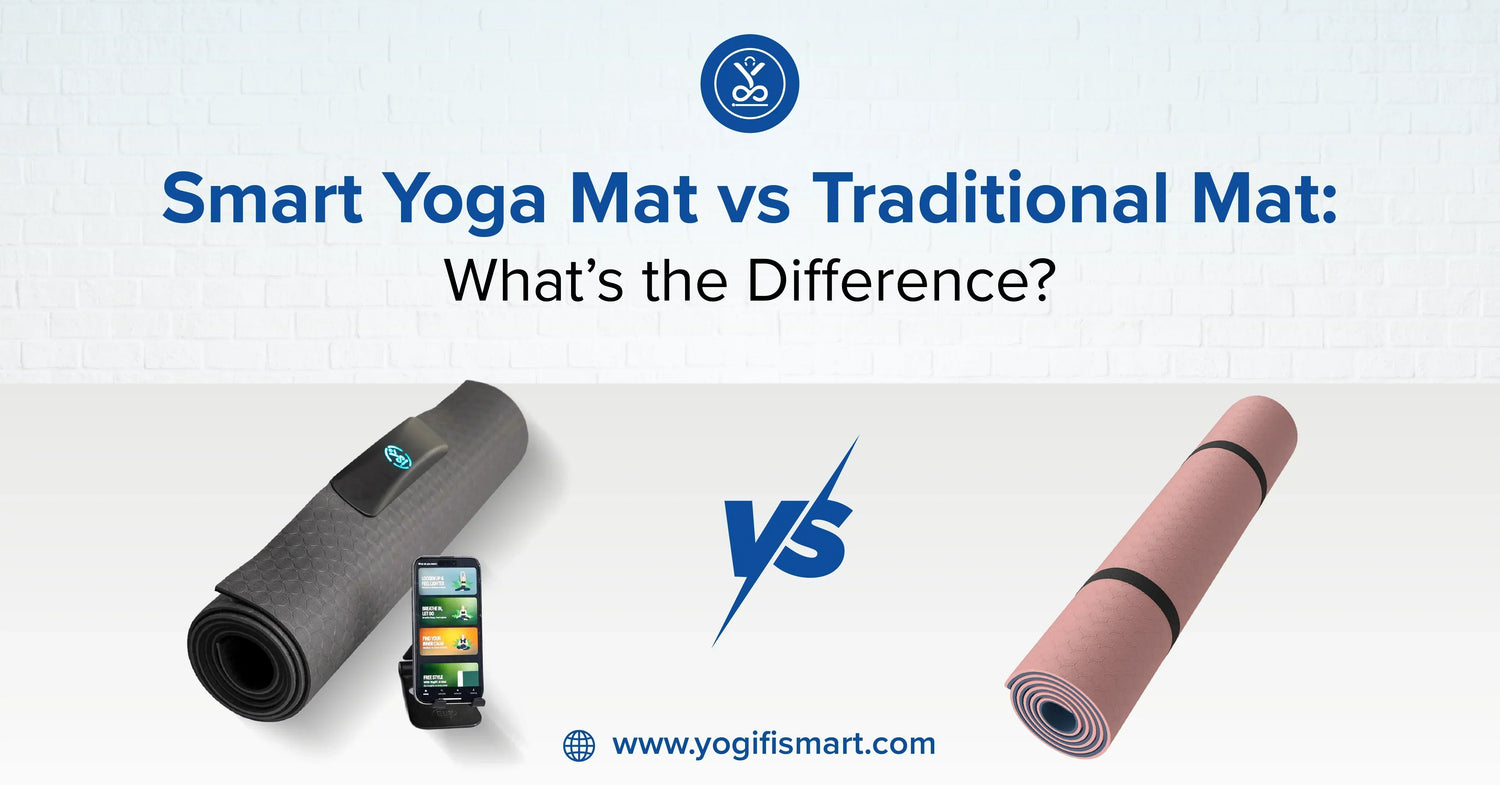Yoga mats have come a long way. Folks who used to buy the same cushy foam mat are now swiping through pages touting “AI yoga mat pros and cons” or “smart yoga mat vs traditional”. Are sensors underfoot really that big a deal? Let’s peel back the layers and compare yoga mats in a friendly, practical way.
Cushion vs Coach – The Core Difference
A traditional mat is straightforward: foam, rubber, maybe recycled cotton. It cushions your joints, gives you grip, and becomes the stage for your practice. An AI yoga mat, by contrast, is more like a quiet coach, sensors detect where your weight falls, apps track balance, and gentle vibrations nudge you into better form.
So, the difference between smart and regular yoga mats? One gives you a place to stand; the other gives you feedback while you stand there.
Tracking Progress – Visible vs Invisible
Ever gone to bed after a practice and can’t remember if you held your Warrior II evenly? With a traditional mat, that kind of balance remains invisible. With a smart mat, the app shows you exactly how your weight shifted, maybe you leaned right more than left by 10% last week, now only 2%.
If you’ve ever wondered whether you’ve improved at all, that’s a reason people ask, “Which is better? A regular mat or smart?” Because one shows you numbers you can track, the other leaves it to feel.
Pros and Cons of Smart Mats
Pros (AI yoga mat pros and cons – upside)
-
Live feedback for better posture and safer alignment
-
Visual charts that show flexibility gains
-
Guided programs tailored to beginners or experienced practitioners
-
Motivation built in, seeing progress feels good
Cons
-
Adds tech, battery, Bluetooth, apps
-
Can cost two to three times more than a simple mat
-
Learning curve for those less tech-inclined
-
Potential distraction if alerts aren’t managed
So, while the smart mat can be a powerful tool, it’s not universally better, just different.
Key Differences Between Yoga Mats
Let’s look at a few head-to-head points in this smart yoga mat comparison:
Guidance: Traditional mats rely on mirrors, teachers, or your own body awareness. Smart mats offer live prompts.
Progress Recording: Regular mats leave results felt, not quantified. Smart mats chart data.
Ease of Learning: Beginners without a coach may benefit more from smart mats. Experienced yogis who already know their alignment might prefer the simplicity of classic mats.
Experience Style: Traditional mats invite quiet, meditative sessions. Smart mats may introduce variable tech interaction.
Spotlight on YogiFi – A Smart Choice
In the crowded field of smart yoga mat comparisons, the YogiFi Smart Yoga Mat stands out. It’s thoughtful: senses pressure, tracks balance, offers vocal cues without being a distraction. You get guidance but aren’t constantly interrupted by beeps and pop‑ups. It even tracks your flexibility gains over time like a coach that keeps count, but doesn’t shout.
Is One Better Than the Other?
It really depends:
Want quantifiable progress and gentle coaching during solo practice? The AI yoga mat pros and cons tip towards smart mats.
Prefer unplugged flow and minimal gadgets? A traditional mat may be better.
It’s not about one being objectively superior, it’s about fit. Think of it like asking, “Do I run with training shoes or barefoot?” Both have benefits; it’s what suits you best.
Choose the Mat That Moves With You
This smart yoga mat vs traditional mat debate isn’t a showdown, it's a conversation. If you love learning about your body, seeing progress, and practicing solo with gentle coaching, the smart mat gives you extra support onscreen and underfoot. If your flow is best experienced in quiet, unconstrained by gauges and graphs, the traditional mat may serve you beautifully.
FAQS
1. Can smart yoga mats help beginners more than experienced yogis?
Absolutely. While beginners often overlook subtle posture misalignments, instructors are trained to catch and correct them. A smart Yoga Mat for Posture Correction bridges that gap by offering instant feedback, guiding users to align properly and improve safely. Seasoned practitioners might shine more light on nuance but could also appreciate real-time stats.
2. Do smart mats really track flexibility?
Yes, they monitor your range in poses like forward bends or hip openers across sessions. Month over month, you can see numbers shift an inch deeper, five degrees more range. It turns what’s usually just a feeling into data.
3. Is a traditional mat better for unplugged practice?
Definitely. For a mindful, device-free flow, traditional mats offer a clear, focused space. No app, no notifications, just breath and movement. If tech distracts you, stick with classic.
4. Which is better in the long run?
If you aim to improve alignment, balance, or flexibility with measurable progress, a smart mat could be your long-term companion. If you prioritize simplicity, affordability, and a meditative vibe, a traditional mat stays reliable session after session.


Leave a comment
This site is protected by hCaptcha and the hCaptcha Privacy Policy and Terms of Service apply.